Tien Thanh Nguyen
Two layer Ensemble of Deep Learning Models for Medical Image Segmentation
Apr 10, 2021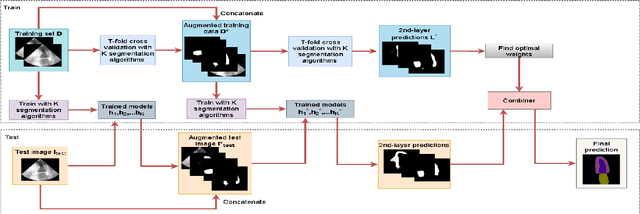
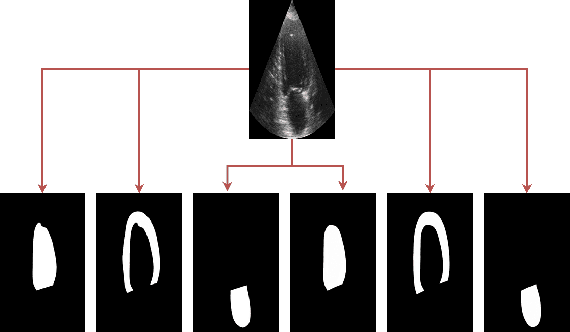

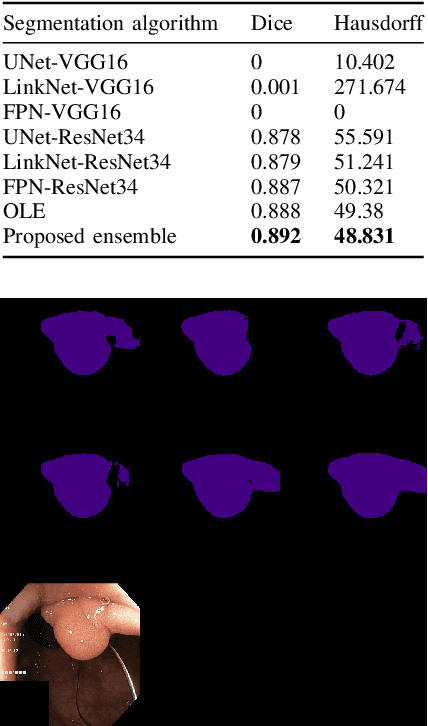
Abstract:In recent years, deep learning has rapidly become a method of choice for the segmentation of medical images. Deep Neural Network (DNN) architectures such as UNet have achieved state-of-the-art results on many medical datasets. To further improve the performance in the segmentation task, we develop an ensemble system which combines various deep learning architectures. We propose a two-layer ensemble of deep learning models for the segmentation of medical images. The prediction for each training image pixel made by each model in the first layer is used as the augmented data of the training image for the second layer of the ensemble. The prediction of the second layer is then combined by using a weights-based scheme in which each model contributes differently to the combined result. The weights are found by solving linear regression problems. Experiments conducted on two popular medical datasets namely CAMUS and Kvasir-SEG show that the proposed method achieves better results concerning two performance metrics (Dice Coefficient and Hausdorff distance) compared to some well-known benchmark algorithms.
Streaming Active Deep Forest for Evolving Data Stream Classification
Feb 26, 2020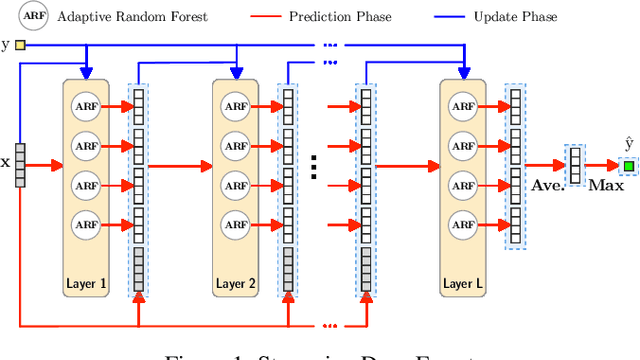
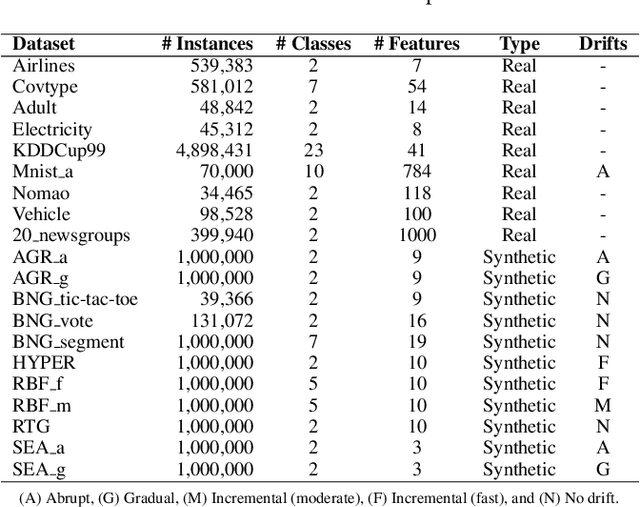
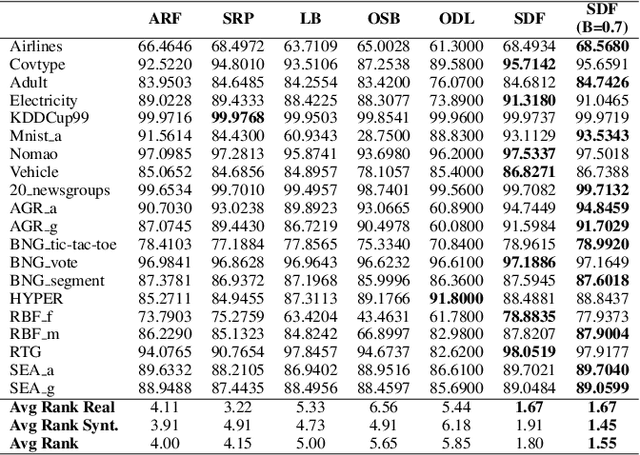

Abstract:In recent years, Deep Neural Networks (DNNs) have gained progressive momentum in many areas of machine learning. The layer-by-layer process of DNNs has inspired the development of many deep models, including deep ensembles. The most notable deep ensemble-based model is Deep Forest, which can achieve highly competitive performance while having much fewer hyper-parameters comparing to DNNs. In spite of its huge success in the batch learning setting, no effort has been made to adapt Deep Forest to the context of evolving data streams. In this work, we introduce the Streaming Deep Forest (SDF) algorithm, a high-performance deep ensemble method specially adapted to stream classification. We also present the Augmented Variable Uncertainty (AVU) active learning strategy to reduce the labeling cost in the streaming context. We compare the proposed methods to state-of-the-art streaming algorithms in a wide range of datasets. The results show that by following the AVU active learning strategy, SDF with only 70\% of labeling budget significantly outperforms other methods trained with all instances.
An ensemble-based online learning algorithm for streaming data
Apr 26, 2017



Abstract:In this study, we introduce an ensemble-based approach for online machine learning. The ensemble of base classifiers in our approach is obtained by learning Naive Bayes classifiers on different training sets which are generated by projecting the original training set to lower dimensional space. We propose a mechanism to learn sequences of data using data chunks paradigm. The experiments conducted on a number of UCI datasets and one synthetic dataset demonstrate that the proposed approach performs significantly better than some well-known online learning algorithms.
Aggregation of Classifiers: A Justifiable Information Granularity Approach
Mar 15, 2017



Abstract:In this study, we introduce a new approach to combine multi-classifiers in an ensemble system. Instead of using numeric membership values encountered in fixed combining rules, we construct interval membership values associated with each class prediction at the level of meta-data of observation by using concepts of information granules. In the proposed method, uncertainty (diversity) of findings produced by the base classifiers is quantified by interval-based information granules. The discriminative decision model is generated by considering both the bounds and the length of the obtained intervals. We select ten and then fifteen learning algorithms to build a heterogeneous ensemble system and then conducted the experiment on a number of UCI datasets. The experimental results demonstrate that the proposed approach performs better than the benchmark algorithms including six fixed combining methods, one trainable combining method, AdaBoost, Bagging, and Random Subspace.
 Add to Chrome
Add to Chrome Add to Firefox
Add to Firefox Add to Edge
Add to Edge